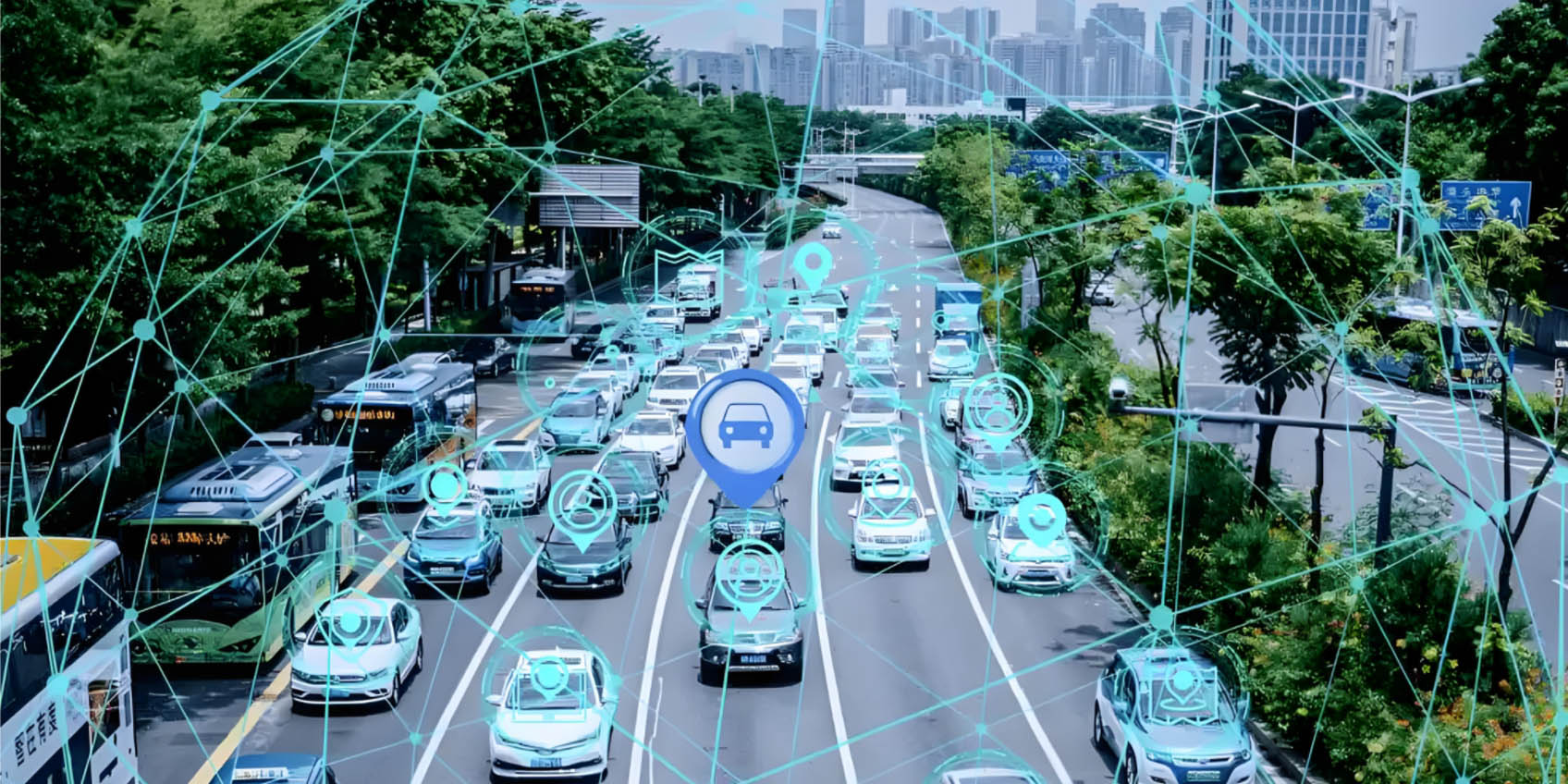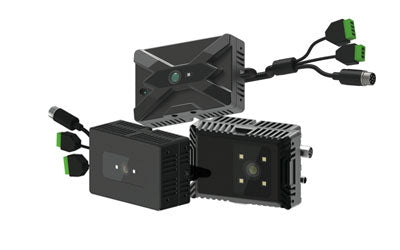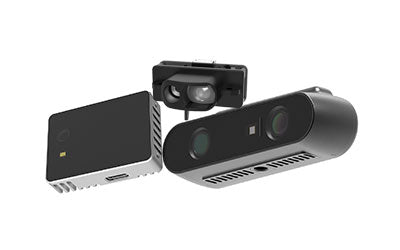Innovative TOF Technology Applications &Benefits in Traffic Monitoring

As urbanization accelerates, traffic management has become a crucial part of city development. Traditional traffic counting methods typically rely on manual counting, ground sensors, or cameras. However, these methods often suffer from issues such as low accuracy, high costs, and slow data processing. With ongoing technological advancements, TOF (Time-of-Flight) technology provides a more precise, efficient, and cost-effective solution for traffic counting. This article explores the applications and advantages of TOF technology in traffic counting.
What is a Traffic Counter?
A traffic counter is a device or system used to monitor and record the number of vehicles or pedestrians passing a specific point within a given time period. These devices are widely used in traffic management, urban planning, and traffic research to collect data on traffic flow, congestion, and road usage.
Traffic counters can be deployed in various environments, such as highways, intersections, parking lots, and sidewalks.
What is TOF Technology?
TOF (Time-of-Flight) technology is a distance measurement technique based on the time it takes for a light signal to travel from a sensor to an object and back. By measuring this time, TOF technology can quickly and accurately calculate the distance between the sensor and the object. The known speed of light enables TOF technology to capture precise distance information in real-time, making it suitable for complex environments and a variety of measurement needs.
TOF technology offers high accuracy, long measurement ranges, and rapid response times, making it highly effective for traffic counting, obstacle detection, and vehicle recognition.
Applications of TOF Technology in Traffic Counting
-
Precise Traffic Flow Monitoring: TOF sensors measure the distance between the sensor and objects, allowing for accurate detection of vehicle counts, locations, and speeds on road segments. This high-precision data enables real-time traffic flow monitoring and classification by vehicle type (e.g., sedans, trucks, buses). Urban traffic management departments can use TOF data to optimize traffic light control, road design, and expansion strategies. In busy areas like highways or city streets, TOF sensors provide critical data for managing and analyzing traffic flow. For example, traffic management departments can use TOF data to predict traffic congestion and take proactive measures to alleviate pressure, improving road efficiency.
-
All-Weather, Uninterrupted Monitoring: Unlike traditional traffic counting methods (such as video surveillance or inductive loops), TOF technology performs reliably in extreme weather conditions. Whether during heavy rain, fog, intense sunlight, or at night with low light conditions, TOF sensors continue to provide accurate data, overcoming the limitations of conventional sensors. This all-weather, uninterrupted monitoring capability is one of the key advantages of TOF technology, particularly for environments requiring 24/7 data collection. In severe weather (e.g., snowstorms or heavy rainfall), TOF sensors maintain clear traffic flow data, ensuring timely responses from traffic management authorities.
-
Efficient Data Processing and Analysis: TOF sensors collect large amounts of real-time data, which is transmitted via wireless networks to data centers for processing. By integrating with cloud computing and big data analytics, TOF technology provides not only basic traffic flow information but also in-depth analysis of vehicle speed, flow density, and traffic patterns. This real-time analysis helps traffic management departments predict traffic conditions, optimize traffic signal timing, adjust road layouts, and forecast future traffic trends. Furthermore, TOF technology can monitor and predict potential traffic accidents, improving emergency response capabilities and minimizing the impact of accidents. By enabling efficient data processing and analysis, TOF technology significantly enhances the scientific and forward-looking nature of traffic management.
-
Vehicle Type Recognition: In addition to precise traffic flow statistics, TOF technology can also identify different types of vehicles. By analyzing the size, speed, and distance of objects, TOF sensors can classify vehicles such as sedans, trucks, motorcycles, and buses. This vehicle classification capability aids traffic management departments in making more accurate traffic plans and transport management decisions. For instance, TOF technology helps ensure the smooth flow of traffic in dedicated lanes for buses and trucks, preventing private vehicles from blocking these lanes and improving the efficiency of public transport.
-
Core Technology for Intelligent Transportation Systems: TOF technology has a wide range of applications within Intelligent Transportation Systems (ITS). By integrating with other smart sensors, video surveillance systems, and autonomous driving technologies, TOF technology supports functions such as automatic traffic signal adjustment, accident detection, and vehicle flow prediction. Its high precision and real-time capabilities allow ITS to efficiently allocate road resources, enhancing traffic safety and fluidity. For example, TOF technology can enable ITS to automatically adjust traffic signal cycles based on current traffic conditions, reducing waiting times and congestion. Additionally, TOF sensors can monitor obstacles and traffic flow directions, providing essential real-time data to support autonomous driving systems. By assisting with ITS, TOF technology enables more flexible and precise traffic control, improving city traffic efficiency and reducing accident rates.
Through TOF technology, traffic counting and management become more efficient, accurate, and capable of handling various complex environmental conditions. As the technology continues to evolve, TOF will play an increasingly important role in urban traffic planning, flow monitoring, public transportation scheduling, and intelligent city development.
Advantages of TOF Technology in Traffic Counting
-
High Precision and Reliability: One of TOF technology's main advantages is its ultra-high precision, with sub-centimeter distance measurements. This accuracy ensures that TOF sensors provide unparalleled reliability in traffic counting, recording every vehicle's passing time, location, and speed. This precision is critical for traffic flow analysis, road design, and traffic planning. Compared to traditional traffic counting methods (e.g., ground induction loops, video surveillance), TOF technology reduces errors and avoids inaccuracies caused by environmental factors or equipment malfunctions. For example, traditional video surveillance may fail in low light or poor weather conditions, while TOF sensors continue to work accurately, ensuring reliable data.
-
Non-Contact Measurement: TOF sensors use non-contact technology, meaning they do not require direct interaction with vehicles or rely on ground sensors. This non-contact measurement approach eliminates common issues like equipment wear and failure in traditional traffic monitoring methods, reducing long-term maintenance needs. Additionally, the installation process of TOF sensors is simpler and more flexible, as they can be mounted on streetlights, traffic signals, or other public infrastructure without requiring complex ground installation. This not only saves installation and maintenance costs but also avoids disruption to traffic flow, enhancing system efficiency.
-
Adaptability to Various Environmental Conditions: TOF sensors are highly stable, ensuring efficient operation in various complex environmental conditions. Whether during the day or night, under strong or low light, or in harsh weather like rain, snow, or fog, TOF technology consistently collects high-quality data. This advantage is crucial for 24/7 traffic monitoring, especially in busy urban areas. In contrast, cameras and other traditional sensors often struggle in low-light or adverse weather conditions. TOF sensors, which use laser signals for measurement, remain unaffected by light and weather conditions, ensuring continuous monitoring and avoiding the limitations of traditional methods.
-
Cost and Energy Efficiency: Another significant advantage of TOF technology is its cost-effectiveness. Compared to traditional traffic monitoring systems, TOF sensors are relatively inexpensive to install and operate. Because TOF technology uses non-contact measurement, the installation process is simple, requiring fewer resources and reducing initial investment. Additionally, TOF sensors have low energy consumption, making them more economical for long-term operation.The high-efficiency data collection capabilities of TOF technology also mean fewer maintenance requirements, reducing the need for frequent repairs or component replacements. Overall, TOF technology provides high precision and reliability while lowering the total cost of traffic monitoring
Conclusion
TOF technology, with its high efficiency and precision, is becoming one of the core technologies in traffic counting. With its all-weather, non-contact advantages, TOF technology provides new solutions for traffic management and intelligent transportation systems. As TOF technology continues to develop, it will play an increasingly critical role in urban traffic planning, flow monitoring, public transport scheduling, and the construction of smart cities.
Synexens Industrial Outdoor 4m TOF Sensor Depth 3D Camera Rangefinder_CS40p
After-sales Support:
Our professional technical team specializing in 3D camera ranging is ready to assist you at any time. Whether you encounter any issues with your TOF camera after purchase or need clarification on TOF technology, feel free to contact us anytime. We are committed to providing high-quality technical after-sales service and user experience, ensuring your peace of mind in both shopping and using our products.
-
Posted in
CS40P





